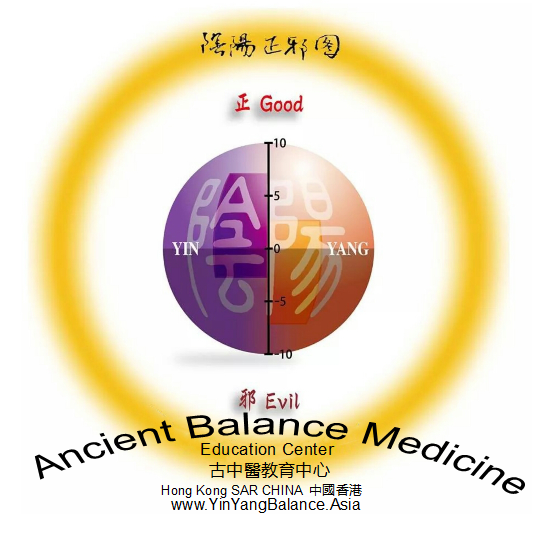ISSS2021 Poster: A Traditional Chinese Medicine Platform for the Unity in Diversity of General Systems Theory 建構中醫系統理論平臺以支持廣義系統論的多樣性統一
2021 June 12 0 By Tomas 黃炎Papernumber: 3806
Title of Paper
A Traditional Chinese Medicine Platform for the Unity in Diversity of General Systems Theory (poster presentation)
Name of Author(s)
TSL WONG
Deeanna BURLESON
E C Yan HUANG
Text of abstract
Being learners of systems thinking, we have acquired deeper understanding of different General Systems Theories from all the professionals of ISSS. We have found many similarities exist between different GSTs and tried to understand them with the holistic perspectives of Confucianism, Buddhism, Daoism, and Traditional Chinese Medicine.
In physics, speed and time do not mean anything without the frame of reference of an observer which determines the perspective of analysis of the system. An observer can try to analyse a system objectively. However, being objective only means that the analysis is agreeable by a certain population of observers. There will always be a larger population of observers and hence the analysis can only be relatively subjective. Objective analysis with either “no perspective” or “all perspective” is impossible. Any analysis will instead take on one of an infinite number of possible perspectives.
A general systems theory must include both the system and the observer decision maker. Therefore, it must include at least one particular perspective. Some of the existing fundamental theories in different fields have certain similarities including set theory in mathematics, relativity in physics, differential diagnosis-cure process in Traditional Chinese Medicine, Taichi Yin-Yang theory in Taoism, and Five Aggregate Systems theory in the teaching of Buddha.
Taichiyin-yang system theory describes the relationship between any two entities (element/process) at any level of interest. It concerns the quantitative and qualitative changes between the entities.
The Five Aggregate system theory of the human mind is one of the important concepts developed in the teaching of Buddha. The Five Aggregates are: observation, distinction, sensation, action and physical object. These five systems are able to describe the properties of the observer and the decision maker.
Heaven, earth, and human are the tripod of wholeness in Confucianism. Research reveals that the properties of heaven may have the key to the structures and functions of the environment.
The traditional Chinese medicine differential diagnosis-cure process is a practical systemic process that has been used daily for more than 2000 years. It is believed that the whole macroscopic-microscopic spectrum of systems is covered. The system state identification involves three pairs of direction-forming spectrums. The Superficial and Internal spectrum gathers information between the boundary and the system. The Cold and Hot spectrum gathers information between the form and function, or matter and energy within the system. The Deficient and Excess spectrum gathers information between the environment and the system. Strategy can then be formulated to regulate and maintain the system.
The Taichi Yin-Yang Five Elements Trinity i±1 systems have five elements structure at both i+1 level and i-1 level. When the i+1 five elements system emerges to become level i water element, the i-1 five elements system would emerge to form level i Earth element. Together with the other three level i elements which provide interactions between Earth i and Water i elements, another level i five elements system would be formed. Similar structure is found in other Ancient-modern East-West systems thinking.
About The Author
| Research Engineer, Health Educator. 研發工程師,養生教育工作者. | |-Bachelor of Medicine in Traditional Chinese Medicine – General Practice and TCM R&D |-Master of Engineering in Telecommunications – A Packet discarding strategy in Asynchronous transfer Mode ATM data network – Queuing theory |-Bachelor of engineering in Information Technology with First class honour - AI Machine Learning in electrical fault diagnostic networks |-Thesis Proposal for potential supervisor in Mathematics: Ethical AI Systems - Harmonizing Autonomy and Communal Responsibility | ===== Research Interest ===== | |Confucianism – Buddhism – Taoism – Traditional Chinese Medicine TCM 儒釋道醫 | Five Virtues of Confucius: Humanity-Justice-Etiquette-Wisdom-Trust 儒家五常:仁義禮智信 | Buddhism Five aggregates systems of human mind 釋j家五蘊系統 | Taoism Taichi Yin-Yang Five Elements Trinity i±1 System 道家陰陽五行天地人系統 | Traditional Chinese Medicine TCM differential diagnosis-cure process 中醫辨證論治系統, | Five Elements Systemic Healthcare Mental-Emotional-Physical-Behavoural-Spiritual 五行健康系統養生-養性-修心-修身-修行-靈修 | Integral East-West Systems Thinking 融合東西方系統思維 | Ethical AI Systems 倫理人工智能系統 | Five-elements Society System EMSCE 五行社會系統: Economics-Management-Social-Cultural-Environmental 經濟-管理-社會-文化-環境, | https://gravatar.com/edu1a1a10c906ec |

 古中醫學會心對心
古中醫學會心對心 微博 炎黃子孫共振中醫
微博 炎黃子孫共振中醫 古中醫教育中心面對面
古中醫教育中心面對面 古中醫教育中心 Our Website
古中醫教育中心 Our Website